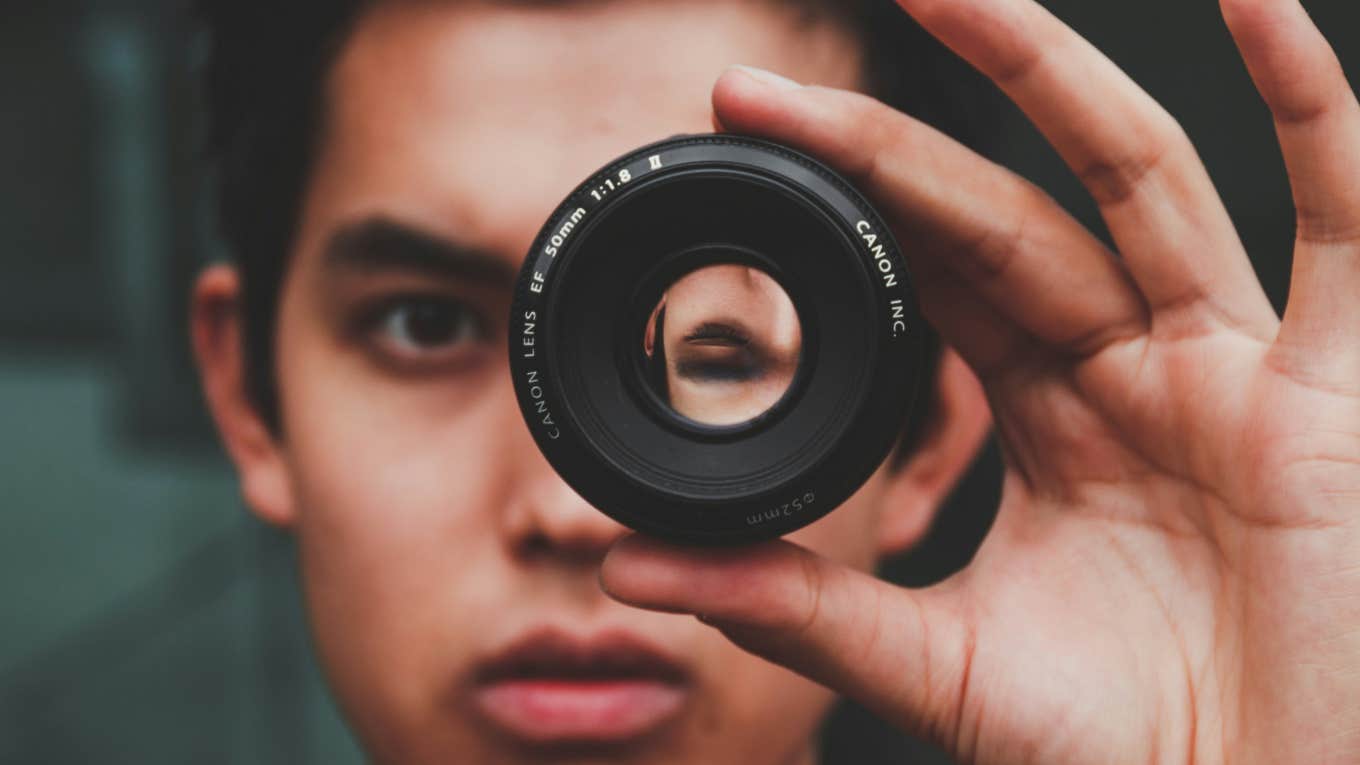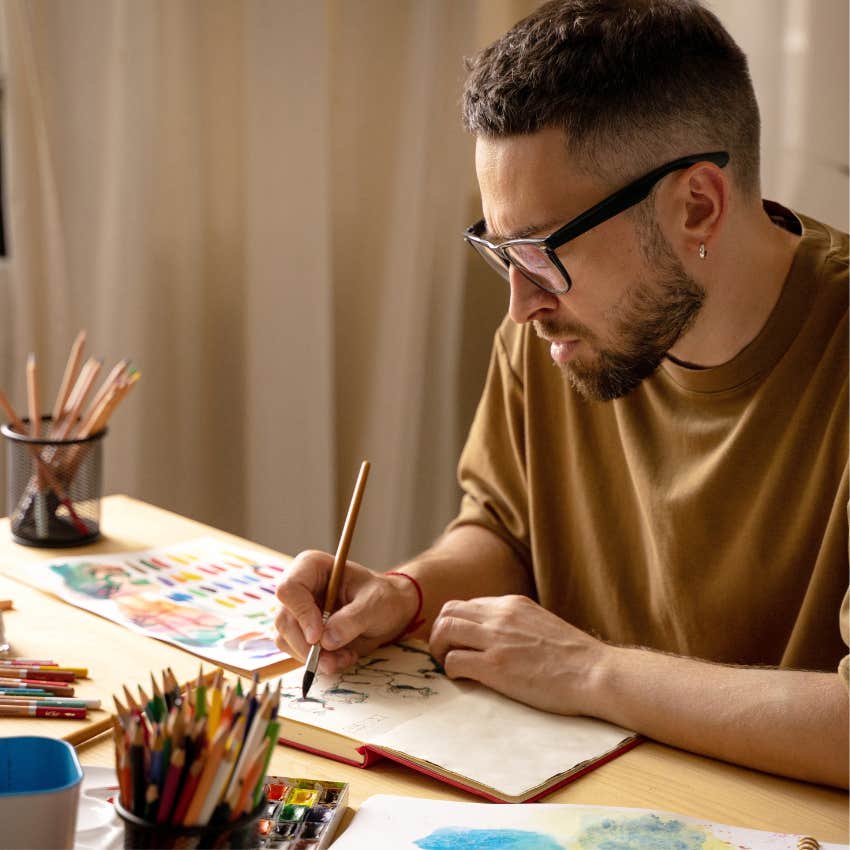The Art Of Creative Genius: 12 Tiny Habits Of The Top 3% Of People
These daily rituals reveal how the top 3% think, create, and turn inspiration into brilliance.
 Andreas Kind | Unsplash
Andreas Kind | Unsplash Most people think creativity is some mystical talent you’re born with or without. That’s not true. Creativity is a skill you can develop with the right habits. However, many people have no idea how to nurture their creativity, instead telling themselves that they’re no more creative than a parakeet. They stall themselves waiting for inspiration to strike instead of creating the conditions where strong ideas naturally emerge.
These aren’t cute productivity tricks. They’re principles from the people who actually studied how creative minds work (and several from my own experience). Here are 12 small shifts that separate the genuinely creative from the perpetually blocked.
Here are the 12 tiny creativity habits of the top 3% of people:
1. They generate first, judge later
Spend the first phase creating as many ideas as possible without evaluating them. Set a timer for 10 minutes and aim for quantity over quality. Become an ideas machine. Only after you’ve exhausted possibilities do you switch to judging and refining. Most people kill ideas before they’re born by judging, editing, and analyzing too early.
The goal of the initial generation phase is to produce as many ideas as possible. Studies show that a higher quantity of ideas generally leads to a higher probability of discovering truly innovative, high-quality ideas. When people are focused on evaluation, they often stop at the first 'good enough' idea, which can be a barrier to breakthrough solutions.
2. They find the sweet spot where the challenge feels exciting, not overwhelming
 insta_photos / Shutterstock
insta_photos / Shutterstock
Creativity peaks when the difficulty of your task perfectly matches your current ability. If it’s too easy and you’re bored. Too hard and you’re anxious.
Find that sweet spot where you’re stretched but not stressed, and your mind enters a state of effortless focus where time disappears and ideas flow. Stretch yourself until you find it. This will come with awareness and practice.
Research shows a strong link between curiosity, the flow state, and creative output. Approach tasks with a mindset of learning to boost your chances of finding flow. When applied to creativity, the Goldilocks principle suggests that the "just right" amount of constraints provides a clear structure that frees the mind to focus on generating imaginative solutions within defined parameters.
3. They mix things up on purpose
Open a dictionary to any page, point to a word, then force connections between that word and your creative challenge, or deliberately seek the most ridiculous solution first. Your brain creates new neural pathways when it’s forced to connect unrelated concepts, especially when you impose limits.
Cognitive flexibility is the ability to shift thinking and adapt to new situations, one study explained. By making a practice of connecting unrelated concepts, you are essentially exercising your brain's ability to be agile and move beyond rigid mental frameworks.
4. They work on multiple projects simultaneously
When one project stalls, switch to another. Writer Ray Bradbury often did this. So do I — I have many articles and books that I write simultaneously.
Your subconscious continues to work on the stuck project while you’re busy elsewhere, and you return with fresh perspectives. This eliminates the dreaded blank page syndrome because you always have momentum somewhere else. Now, who can stop you?
5. They embrace the Janusian process of opposites
Hungarian intellectual Arthur Koestler showed that breakthrough ideas often come from holding two contradictory concepts in mind simultaneously. Think ‘organised chaos’ or ‘structured improvisation’. The creative mind thrives on paradox, finding synthesis where others see only conflict.
Considering the opposite of a problem helps individuals overcome functional fixedness, which is the tendency to see objects only in terms of their conventional use. Research on the Janusian process demonstrates that it can be a powerful tool for creative problem-solving, cognitive development, and emotional health.
6. They create in a state of relaxed alertness
Your most creative moments happen when you’re alert but not tense. Think of the mental state you have during a good conversation, engaged but not forced.
This is why great ideas often emerge in the shower or on walks, rather than during high-pressure brainstorming sessions. Ensure you have a way to capture all the ideas you receive during these relaxed yet attentive moments.
7. They use constraints to force creative solutions
Limitations force you to do more with less. Hence, they’re powerful creativity boosters. Write a story in exactly 55 words, or connecting two seemingly disparate ideas. Design something using only three colours.
Set a strict time limit with a timer. Constraints force your brain to find clever workarounds.
8. They poke holes in their own assumptions
Pick something everyone ‘knows’ to be true in your field and ask ‘What if this is wrong?’ The most creative breakthroughs come from challenging accepted wisdom. Every revolution started with someone questioning what seemed obviously true.
Identifying your deepest assumptions provides insight into your own cognitive patterns, values, and potential blind spots. Research recommends engaging with people from different backgrounds. Exposing yourself to diverse viewpoints can challenge and broaden your assumptions.
9. They doodle to activate their creative mind
 Garnar / Shutterstock
Garnar / Shutterstock
Hand motion connects with mental motion and instantly stirs your creative juices. Doodling helps you get into a creative frame while reducing cognitive load. Your mind settles and becomes more open. It’s not childish! It’s a proven way to activate the same neural networks you use for complex creative work.
Research shows that people who doodle while listening to a monotonous message can recall more of the information afterward than those who don't doodle. Doodling gives the brain a soft landing spot, allowing it to stay more attentive and engaged without becoming completely distracted.
10. They work when their mind is in transition
The moments between sleep and wake, or when you’re slightly tired, are goldmines for creativity. Your inner critic goes quiet, and weird, wonderful connections emerge. Haruki Murakami wakes at 4 am to write while his mind is still in that dreamlike state.
While deep focus is important, periodically switching between different types of creative tasks can help generate more diverse ideas and overcome cognitive fixation. Research argues that the benefits are most evident when transitions are navigated mindfully.
11. They combine two existing successes into something new
Take something working in your life and something you’ve seen work elsewhere. Force them together. Maybe you love Mr Beast videos and you’re passionate about writing. Could you create writing videos in his style? Hybrid ideas often become breakthrough innovations.
Creative blocks often result from cognitive fixation, where one gets stuck in a habitual pattern of thought. Combining existing ideas offers a way to break free from these mental ruts by forcing novel connections.
12. They build environments that reward experimentation
Surround yourself with materials, books, and stimuli that invite play. Have a sketchbook always open. Have interesting posters and artwork around you.
Keep interesting objects on your desk. Your environment should whisper ‘what if?’ or ‘play with me’ rather than demanding productivity. Physical space shapes mental space.
Alex Mathers is a writer and coach who helps you build a money-making personal brand with your knowledge and skills while staying mentally resilient. He's the author of the Mastery Den newsletter, which helps people triple their productivity.

